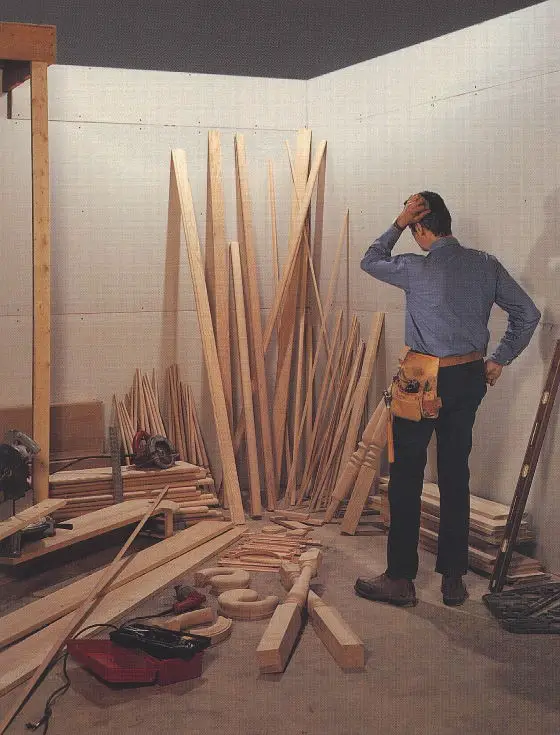Stair Railing Assembly

Stair Railing Assembly
DEAR TIM: I'm in the midst of renovating my first old house and need help with the stair railing. The staircase leading to the second floor has an oak handrail with spindles and a curlicue thing on top of the post at the bottom of the stairs. The handrail and large, decorative posts are loose. Do I just renail all the spindles to tighten it back up? Is there something else I should / can do? Or, is it best just to start over with a new handrail system? M.I.
DEAR M. I.: Did you slip on some sawdust and bump your head? Do the words volute (your curlicue thing), newel, goose neck, or turnout sound familiar? I didn't think so. You are about to enter a dimension of finish carpentry that only a select few can navigate successfully.
Staircase handrail systems are, in my opinion, the most difficult aspect of finish carpentry. A typical installation may take an experienced carpenter, with a helper, 4 - 5 days to install! Probably less than 1 percent of the finish carpenters in the trade can correctly install handrails and balusters. Your handrail was installed by a carpenter who is in the 99 percent group. Handrails and balusters installed correctly simply don't come loose.
Handrail systems derive their strength and stability from the larger, often decorative, newel posts that are found at the bottoms, tops, and landings of staircase. If the newel posts are not securely fastened, the entire handrail system will shake. The thin balusters that extend from the handrail down to each stair tread offer little strength. Their purpose is to form the barrier so you and your children do not fall off the stairs. Toenailing your spindles will do little to help the loose handrail or posts.
Newel posts at the top, bottom, and balconies of a staircase often have long, thick dowel pins at the bottom of each post. These dowels fit into precisely drilled holes of the same size. Drill the hole too big, even by 1/16th inch and your newel post may wiggle. Newel posts installed at landings incorporate long, heavy lag bolts which are attached to hidden rough framing members. Often these posts are notched into the stair tread nosings for additional stability.
To fix your loose handrail system, you must attack the problem from below. It will not be easy. Newel posts at the bottom and top of the stairs will be the hardest to tighten. Simply put, you now face the task of inserting a 16 inch long one half inch diameter lag bolt up into each post from below! This lag bolt must pass through solid blocking attached to your floor joists directly into the center of the dowel pin. The lag bolt should penetrate up into the newel post at least 8 inches.
Thinking of starting over? If so, there are several companies that, build, precut, assemble then knock down the entire handrail system for just about any project. These same companies preassemble the staircases. You, or your builder, simply provide them with a few basic measurements. The manufacturers claim that an average staircase and handrail system can be assembled in 4 hours. This sounds like something that may be of interest to you.